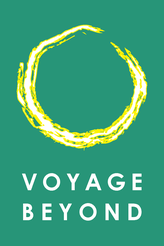Gert-Jan de Hoon: Transformation Coach. Storyteller. Guide.

Gert-Jan de Hoon (1966), born in the countryside in the Netherlands, is founder of Voyage Beyond and co-founder of Foundation Anders Bekeken. He is the author of A pilgrimage to Santiago, and co-author of Walking in the Rain. His unique talent is to empower people in a very natural way, unlocking teams, and asking the right questions that connect people.
My life path
After my study of Communication Science, I made a choice for long and winding paths to unknown destinations, instead of a fixed career path. It brought me to China in the pre internet era (1991), I lived and worked in Uganda (Africa) and Spain, where I discovered the Camino. I travelled with groups in China, Nepal, India and Pakistan and fell in love with the Canadian wilderness during a wilderness guide course. On my life journey I have learned to listen to my intuition, being flexible, making contact on deeper levels, dealing with setbacks, keeping things simple, not giving up and living with passion.
"I assist people and organizations to connect with themselves, their dreams and purpose."
My career path
I have extensive experience in the corporate world, the health sector, international diplomacy, the travel industry and was owner/partner in a management consultancy for 5 years. I have worked with medical staff, underprivileged youths, detainees, graduates, top management, youth, refugees and starting entrepreneurs. I walk with clients on the Camino in Spain and I lead workshops and masterclasses at unique locations worldwide.
Foundation Anders Bekeken
This foundation organizes and supports activities and projects for people with disabilities, to increase self-knowledge, self-confidence and self-acceptance as to get more direction over their own life. An example is Camino Walking Blind, a pilgrimage to Santiago with people who are visually impaired.
Logo Voyage Beyond

The logo of Voyage Beyond is based on Ensõ, a sacred symbol in the Zen school of Buddhism. According to Audrey Yoshiko Seo, author of Ensõ: Zen Circles of Enlightenment, "Zen circles, ensõ, are symbols of teaching, reality, enlightenment, and a myriad of things in between. Seemingly perfect in their continuity, balance, and sense of completeness, and yet often irregular in execution, ensõ are at once the most fundamentally simple and the most complex shape."
Ensõ refers to the beginning and end of all things, the circle of life and the connectedness of existence. It can symbolize emptiness or fullness, presence or absence. All things might be contained within, or, conversely, excluded by its boundaries.
